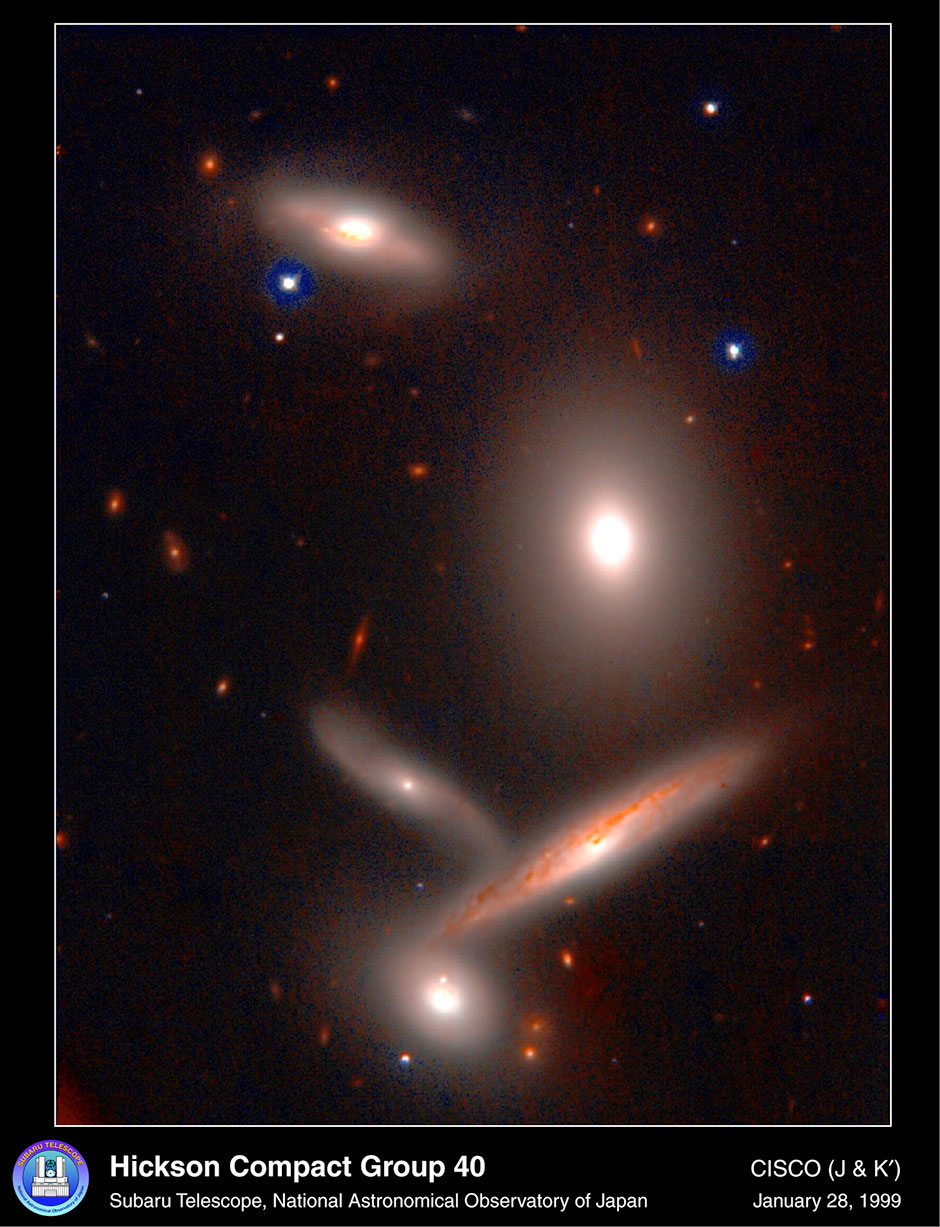Mutually Attracted Galaxies - Hickson Compact Group 40 -
Astrophotography・

It is rare that a galaxy is found alone in outer space. Most galaxies form assemblies. The sizes of the assemblies vary. We call an assembly that contains relatively few galaxies, for example several galaxies to a dozen or so galaxies, a “galaxy group.” A larger assembly of galaxies is called a “galaxy cluster.” This “Hickson Compact Group 40” is a small, compact galaxy group about 300 million light-years away in the direction of the constellation Hydra. It is the 40th entry in the catalog of relatively small galaxy groups (compact galaxy groups) compiled by Hickson. Therefore, it is referred to as “HCG (Hickson Compact Group) 40.”
Traces of Interactions Seen in the Shapes of Galaxies
In this image, five galaxies of assorted shapes, such as spiral, elliptical, and lenticular, look like they’re pressed shoulder-to-shoulder. Galaxies belonging to a compact galaxy group are attracted by each other's gravity, and in many cases, they have peculiar shapes due to their interactions. HCG 40’s spiral galaxy has a complicated shape, probably because of the gravitational interactions. Also, in a compact galaxy group, galaxies that come too close frequently collide. The elliptical galaxies visible here might tell us that previous collisions between galaxies have occurred. A compact galaxy group composed of these various shapes of galaxies gives us important information about galaxy evolution.
Text by: Tomoko Ono (Public Relations Center, NAOJ)
Translation by: Hiroko Tsuzuki and Ramsey Lundock (NAOJ)
Image Data
| Object | Hickson Compact Group 40 |
|---|---|
| Telescope | The Subaru Telescope |
| Instrument | CISCO (Cooled Infrared Spectrograph and Camera) |
| Wavelength | J band (1.25 micrometer) and K’ band (2.15 micrometer) |
| Exposure | 480 seconds (J band), 480 seconds (K’ band) |
| Date | January 14, 1999 (J band) and January 12 (K’ band) (UT) |
| Credit | National Astronomical Observatory of Japan and Hyper Suprime-Cam Project |